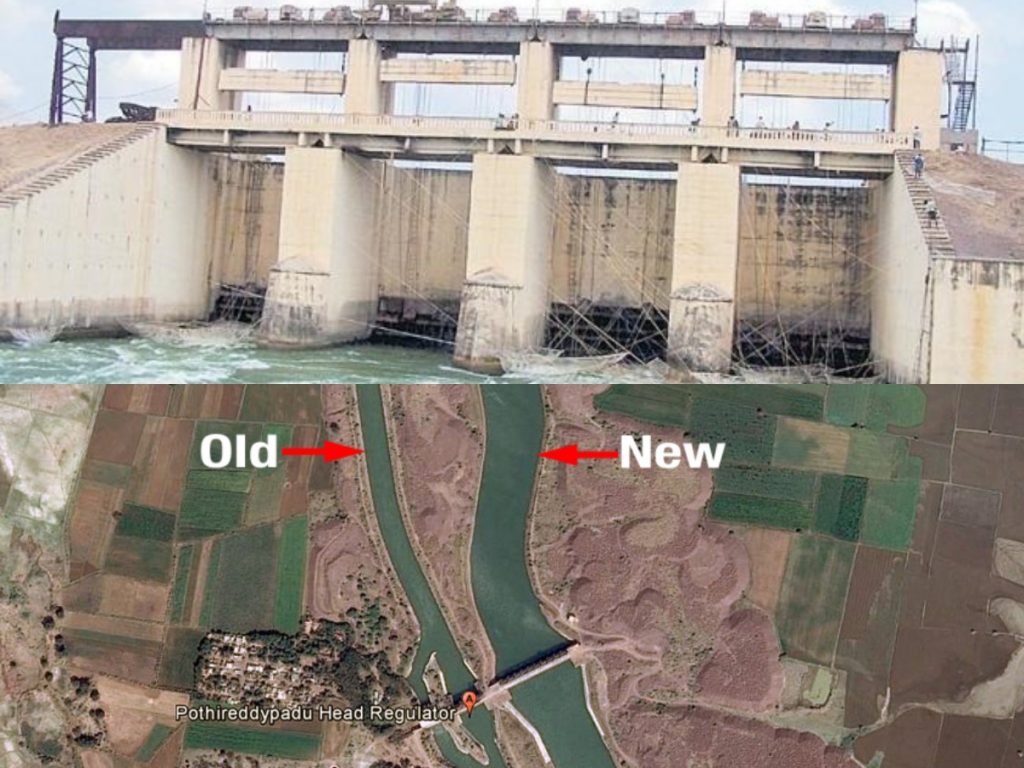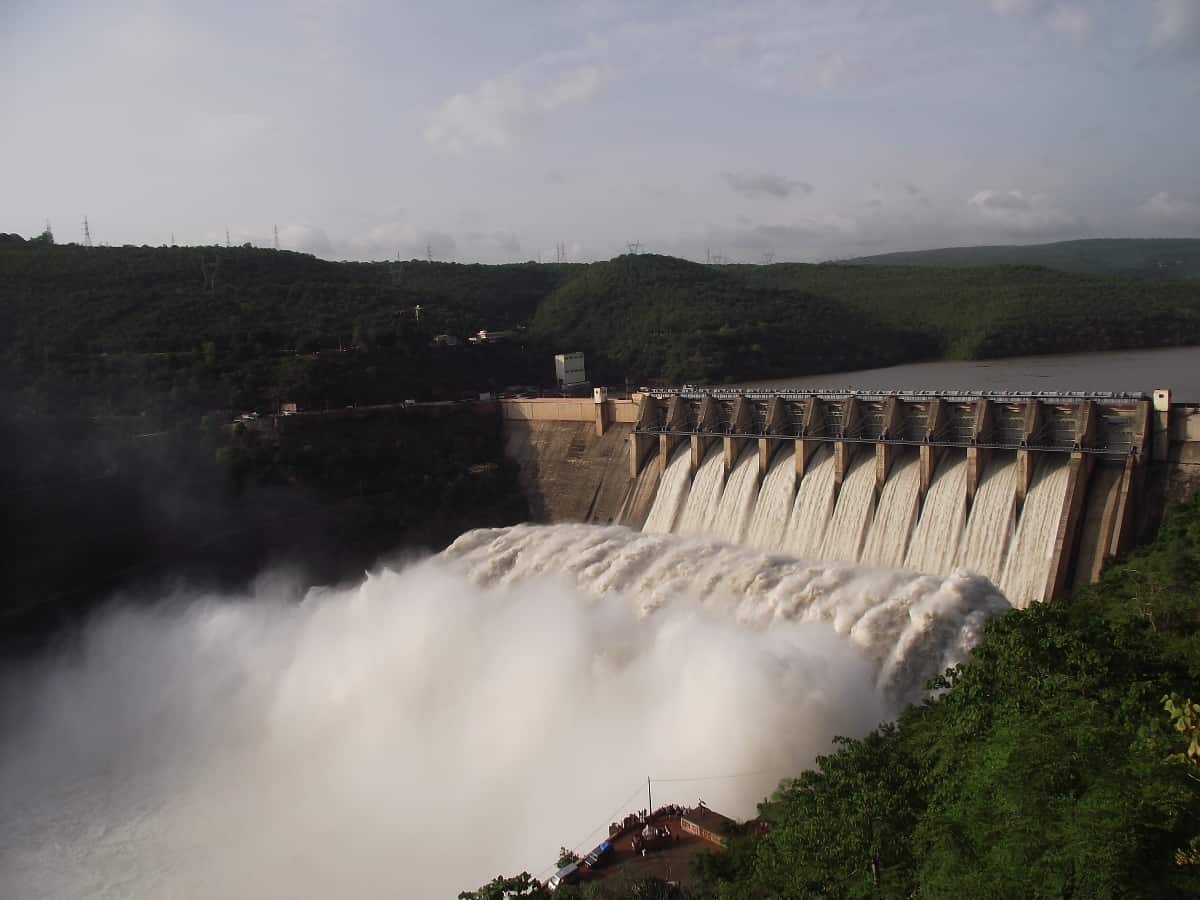Hyderabad: For the past few weeks, Telangana and Andhra Pradesh have been indulging in a bitter war of words over sharing of Krishna waters and alleged illegal construction of irrigation projects on both the sides.
The Telangana ministers have been constantly attacking the AP government for ‘illegally’ taking up Rayalaseema lift irrigation project (RLIP) on the Krishna river and going ahead with the project works in spite of the orders from National Green Tribunal to stop the works.
They even foul-mouthed former chief minister of combined Andhra Pradesh late Dr Y S Rajasekhar Reddy for the present water dispute between the two states. Excise Minister V Srinivas Goud even described YSR a humanoid monster, while R&B Minister V Prashant Reddy called Jagan a bigger thief than his father.
Telangana argues that the RLIP will badly affect its interests, while AP government maintains that it is not using even a single drop of water more than what was allocated to it by the Krishna water dispute tribunals.
Andhra Pradesh also objected to proposed construction of lift irrigation schemes on the left side of Krishna River by Telangana, besides unauthorised drawl of river water from reservoirs for generation of hydel power without approval from the KRMB.
On Thursday, Andhra Pradesh chief minister YS Jagan Mohan Reddy wrote a letter to Prime Minister Narendra Modi and Jal Shakti minister Gajendra Singh Shekawat seeking a direction to Telangana to stop power generation.
Jagan also urged the union government to take overall offtakes of common reservoirs with CISF protection and safeguard the interests of the State of Andhra Pradesh.
According to the latest reports, the KRMB is likely to meet on July 9 to look into the allegations made by both the states.
History behind the water war
To understand the history of the Krishna River water dispute between the two Telugu states, the geography of the river flow and the water sharing between the upper riparian and lower riparian states must be understood.
The 1400 km-long Krishna River originates from Maharashtra, flows through Karnataka, Telangana and Andhra Pradesh before it empties into the Bay of Bengal. Way back in 1976, Maharashtra, Karnataka and erstwhile combined Andhra Pradesh had entered into an agreement for river water sharing as per the award of a tribunal headed by R S Bachawat (first Krishna Water Dispute Tribunal or KWDT) under two schemes. The first scheme pertained to the division of the available waters based on 75 per cent dependability, while the other one recommended ways to share the surplus waters.
Among the total quantum of 2060 thousand million cubic feet (TMC) of water available, the tribunal divided it between three states. Maharashtra was to get 560 TMC, Karnataka 700 TMC and (erstwhile) AP would get 800 TMC. It also ordered that Andhra Pradesh could utilise surplus waters of the river, without claiming permanent rights over it.
In the combined Andhra Pradesh regime, several projects including Srisailam (completed in 1980), Nagarjuna Sagar (1955), Priyadarshini Jurala project (1995) and Pulichintala (2013) were built across the river, meant to serve different purposes.
The present dispute between Telangana and Andhra Pradesh is on drawal of Krishna water from Srisailam reservoir which has Nagarkurnool district of Telangana on the left side and Kurnool district of Andhra Pradesh on the right side. Initially built for hydro-electric power generation only, the Srisailam project was later converted into a multipurpose project catering to the irrigation needs of both the states.
Cut to the 1980s. In an arrangement to provide drinking water supply to Chennai, the then chief ministers of Andhra Pradesh and Tamil Nadu, N T Rama Rao and MG Ramachandran implemented The Telugu Ganga Project, or the Krishna Water Supply Project.
Water was drawn from the Srisailam reservoir backwaters, via a head regulator at Pothireddypadu and diverted towards Chennai through Srisailam Right Branch Canal (SRBC) and other inter-linked canals, over a distance of about 406 km, before it reaches the destination at the Poondi reservoir near Chennai.
From the assured Krishna river water that the erstwhile Andhra Pradesh state received, Bhima, Nettempadu and Kalvakurthy reservoirs were decided to be taken up in Telangana region for irrigation needs.
The YSR factor
The major reason for the present disputes dates back to YSR’s regime in 2005, when he took up expansion of Pothireddypadu head regulator from its original discharge capacity of 11,500 cusecs to 44,000 cusecs, thus drawing four TMC ft of water from Srisailam backwaters, which continued even post bifurcation.
Meanwhile, as per the stipulations by the Bachawat tribunal, a second KWDT headed by Justice Brijesh Kumar, was constituted in 2004. It delivered its report in 2010, which made allocations of the Krishna water at 65 per cent dependability and for surplus flows as follows: 81 TMC for Maharashtra, 177 TMC for Karnataka, and 190 TMC for Andhra Pradesh.
Publication of the Brijesh Kumar Tribunal report in the gazette was stayed by the erstwhile AP government on the grounds that injustice was done to the State in allocation of water after the dependability was brought down to 65 per cent by the tribunal against 75 per cent in Bachawat Tribunal.
AP also emerged a loser in this verdict by losing the exclusive surplus water rights as the Brijesh Kumar tribunal pointed out that the Bachawat tribunal granted only the liberty to use the surplus water, but had clearly said that the state could not claim any right on it.
In 2013, the KWDT issued a ‘further report’, which was again challenged by AP in the Supreme Court in 2014. After the creation of Telangana from Andhra Pradesh in 2014, the Water Resources Ministry has been extending the duration of the KWDT.
Post-bifurcation issues
After the bifurcation, Telangana asked the Centre to constitute a new tribunal and that the allocation of Krishna waters be reworked among four states.
An apex council was formed under the Andhra Pradesh Reorganisation Act, 2014, to supervise the functioning of the Godavari and Krishna River Management Boards, and to resolve any dispute over sharing of river waters between Andhra Pradesh and Telangana.
The tribunal, however, did not revisit its award, but reallocated waters between two Telugu states. Of the 811 TMC of Krishna water allocated to the combined state Andhra Pradesh and Telangana were sharing 512 TMC and 299 TMC respectively.
This was challenged by Telangana in the Supreme Court in 2015 and had been pending since then. During the recent apex council meeting, Telangana agreed to withdraw its case in the Supreme Court, if the Centre agrees to constitute a new tribunal to decide the quota between the two states. Following an assurance from the Centre, the Telangana recently withdrew the petition.
Latest contention
What triggered the current row between the two states is an order (GO 203) on May 5 last year by the Andhra government regarding the administrative sanction for the Rayalaseema Lift Irrigation Scheme (RLIS) to lift 3 TMC water daily from the Srisailam reservoir, which was to be carried through the Srisailam Right Main Canal (SRMC) to meet the requirements of the Rayalaseema region of the State.
The carrying capacity of the canal was to be enhanced from 44,000 cusecs to 88,000 cusecs to absorb the extra load. The total estimated value of works mentioned in the order was ₹6,829 crore.

Not only did the Telangana government file a complaint with the KRMB, it also gave the go-ahead for a barrage across the Krishna at Alampur in Gadwal district, a flood flow canal, a lift irrigation scheme from the Nagarjuna Sagar tail-pond, and three other projects.
When chief minister Jagan pointed out the new projects on Telangana side, KCR has refuted these allegations, saying all of these “new” projects had been designed by the government of combined Andhra Pradesh before the bifurcation.
And the blame game continues…

